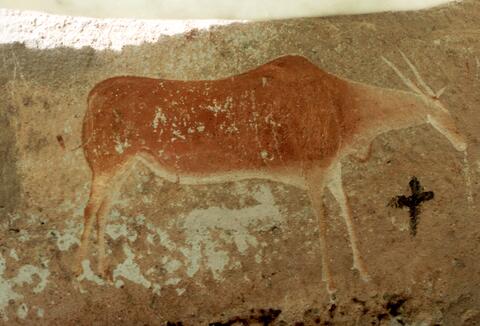Identity area
Reference code
Title
Date(s)
- 10/1997 (Creation)
Level of description
Extent and medium
Context area
Name of creator
Biographical history
Name of creator
Name of creator
Biographical history
The KwaZulu-Natal Museums is a cultural and natural history museum renowned for its unique collections - there are eight natural history and around ten cultural history galleries that include an array of mammals (together with the last wild elephant in KwaZulu-Natal), birds, amphibians, insects, an extensive mollusc collection and a life-size T-Rex model. There is also a room dedicated to KwaZulu-Natal history, geological and Paleontological material, and a reconstruction of a Victorian street set in the late 1800's, complete with shops, stable and period homes. Take a walk through a life size recreation of a Drakensberg cave with rock art drawings or a walk on the wooden deck of a wrecked trading vessel in our Towns and Trade Exhibition.
What makes the KwaZulu-Natal Museum particularly interesting is the array of interesting temporary exhibitions that give the museum a definite dynamic advantage. Temporary exhibitions and happenings have included an exploration of the history of segregation in the US, xenophobic violence, children’s art exhibition. The Museum officially opened an exciting exhibition on the Soccer World Cup, in May 2010. The 150th anniversary of the arrival of Indian people to South Africa was celebrated in November 2010, with the launch of a new permanent exhibition showcasing the Indian community of Pietermaritzburg. The KwaZulu-Natal Museum is also very popular with the schools and family visitors alike.
Name of creator
Biographical history
Repository
Archival history
Immediate source of acquisition or transfer
Content and structure area
Scope and content
The eland was the first animal that the San trickster deity, /Kaggen created and it remained his favourite.
The eland is the largest of southern African antelope and is much desired for its meat and fat. The San say that all other animals are like servants to the eland.
The importance of this animal is shown in the great variety of postures and perspectives. It is depicted running with tail outstretched, with uplifted head smelling the wind, and upside down, presumably dead. The eland is also depicted from the front or from the back, and even from above.
The eland appears in four important San rituals it is the most carefully depicted antelope in both rock paintings and engravings: Trance dance, boy's first kill, girl's puberty and marriage. It is believed that eland fat contains a lot of potency and in a trance dance shamans aspire to possess eland potency.
Appraisal, destruction and scheduling
Accruals
System of arrangement
Conditions of access and use area
Conditions governing access
Conditions governing reproduction
Language of material
- English

